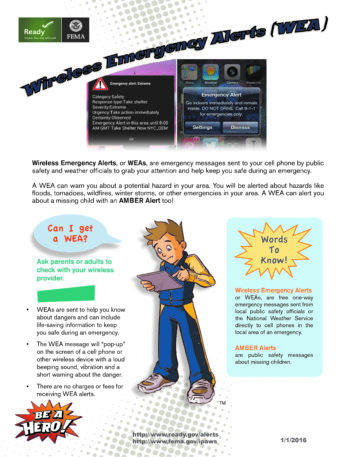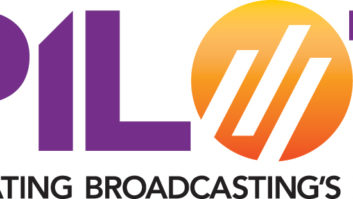
The author is chairman of the Washington State Emergency Communications Committee. In 2016 Radio World interviewed Freinwald about EAS reform. We checked in with him for this issue.
The Washington SECC has a reputation for thinking outside the box when it comes to how they deal with Public Alert and Warning, in particular EAS. We think of ourselves as “progressives.”
The structure of the Washington SECC is an open, ongoing, cooperative and collaborative process that welcomes everyone involved with public alert and warning. We meet every other month, operate two in-state email list-servers, and often have ongoing committees working to deal with specific needs and tasks.
Our EAS plan is unique in that it covers a broad range of areas that go well beyond what is required by the FCC. For example, Amber, Wireless Emergency Alerts, Organizational Structure, etc. The FCC is only interested in a portion of what we do. Yet, the idea is to be more inclusive for more public alert and warning systems.
Not long ago, the FCC announced that they are moving toward hosting State EAS Plans online via a process they call Alert Reporting System or ARS. After closely looking at what the FCC was proposing, it was decided that this would be a good time to perform an extensive update to our State Plan.
To accomplish this task, the SECC created the Plan Revision Committee. Its goal was to review our existing plan and make changes indicated by the FCC’s proposed changes.
WA-PAWS
One of the first addressed was to rename our new plan. Whereas the FCC would be hosting the Washington State EAS Plan (online) and whereas the contents would likely differ from our Plan, it was determined that having two plans with the same name was not wise.
Therefore, the Plan-Revision Committee proposed to the SECC that the name of our new Plan be WA-PAWS, or Washington Public Alert and Warning Systems. This title has been approved by the SECC.
The new WA-PAWS plan will be like the existing EAS Plan and be printable as well as be available online. We will continue to use “tabs” to house specific items that will make updating much easier.
Unlike the present plan, the new one will be broken into segments: Overview, Structure, Distribution, LECCs, Amber and Additional Resources. And finally, rather than duplicate what the FCC will have online for the State EAS Plan, we will simply provide a link to the FCC site hosting that tab information. In other words, the State EAS Plan will be a segment within the WA-PAWS Plan.
The process of getting from here to there is a gradual and deliberate one. We meet via a conference bridge about every two weeks, with periodic in-person meetings. Ongoing are a lot of emails with electronic document support. The committee reports to the SECC as to its progress every two months during their regular meetings. The Plan-Revision Committee has been working on this process now for over a year.
Once we agreed to the overall concept and structure, we have been dealing with each segment of the new plan’s tabs, slowly and deliberatively. At this writing we are dealing with what we call our Monitoring Matrixes, which are tables that guide participants as to what they should monitor in each operational area. We are dedicated to getting each segment right before proceeding further. The impact on participants (radio and TV stations and cable systems) of these updates will be minimal, and FCC compliance will be easier for participants.
In the future, participants will be able to view the WA-PAWS Plan online, hosted on the Washington State Emergency Management website. The refreshed state plan will be a wealth of information about how the overall process functions, including such details as “what needs to be monitored,” etc. Specifics regarding the State EAS Plan will be available online via FCC ARS. Validation of all the monitoring sources will be determined by the FCC (and FEMA) via the existing ETRS.
BEYOND BROADCAST
It is important to understand that today, broadcasting is no longer the primary means of alerting the public. Today, there are more, and perhaps better, “tools” in the Public Alert and Warning Tool Box. It can be argued that the most effective tool for that task is WEA.

Interestingly, if you look at the software that’s used by emergency managers, many of these programs provide a means for launching both EAS and WEA Messages. These systems have been joined by other tools, for instance participation by the National Weather Service, Reverse 911 telephone systems, highway signs, opt-in local alert programs and more.
The challenge for broadcasters is to enhance their willingness to broadcast these public alert and warning messages. Tragically, many broadcasters decline to air anything other than what the FCC requires. Emergency managers know this and, as a result, have had no choice but turn their attention to other additional resources to alert the public.
Our role in this effort is to further educate emergency managers on how to more effectively use all these tools. The need to have broadcasters participate in both the state committees (SECCs) and local groups (LECCs). This participation needs to come from management. Unfortunately, too many broadcast managers have concluded that EAS is a technical function. The truth: It is not. It is a public service function with the goal of saving lives and, as such, deserves attention from higher levels in the broadcast industry.
One more thing our SECC is working on: how to provide post-disaster information to the public after a major event such as the major earthquake that is promised for this part of the country. This effort requires more tools and more training for all stakeholders, and perhaps is another story for another time.
Clay Freinwald has been chairman of the Washington SECC since 1996 and is a past recipient of Radio World’s Excellence in Engineering Award. He can be reached at [email protected].










